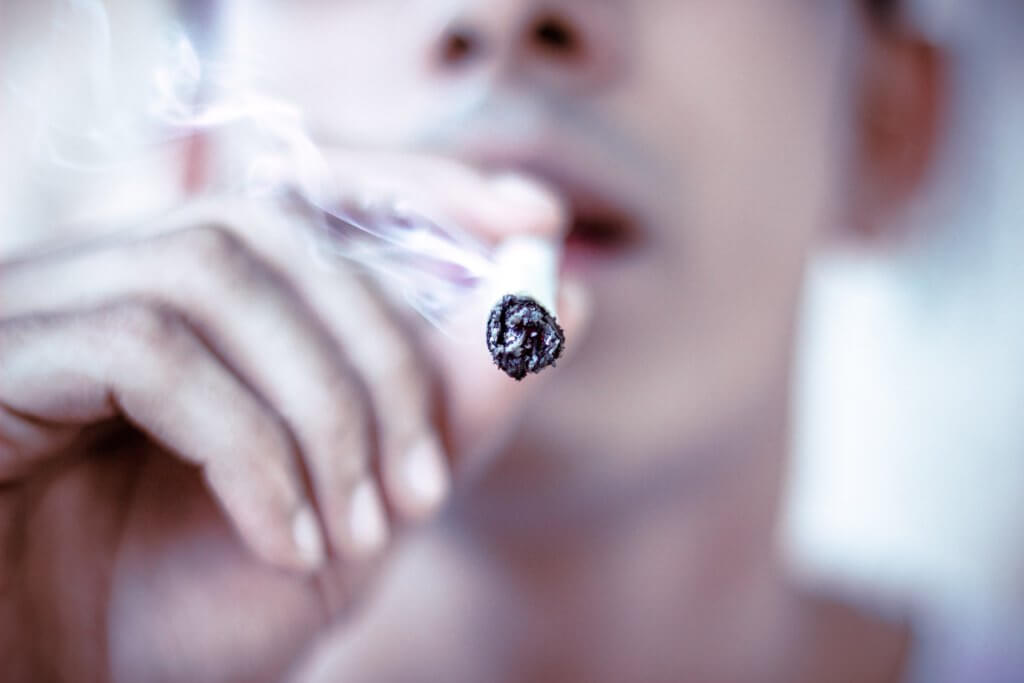CAMBRIDGE, United Kingdom — Teen smoking and nicotine addiction display a concerning link to shrinking brain volume, a new study warns. An international team reveals that teenage smokers who picked up the habit by age 14 have, on average, significantly less grey matter in a section of their brain’s left frontal lobe. This area of the brain is associated with decision-making and rule-breaking behavior.
Grey matter, the brain tissue that processes information, contains all of the organ’s neurons. Although brain development continues into adulthood, grey matter growth peaks before adolescence.
The research team, which included scientists from the Universities of Cambridge and Warwick, as well as Fudan University in China, analyzed brain imaging and behavioral data from over 800 young people at the ages of 14, 19, and 23. They proposed that low grey matter volume in the left ventromedial prefrontal cortex might serve as an inheritable biomarker for nicotine addiction, a discovery with significant implications for quitting and treatment strategies.
Furthermore, the scientists discovered that smokers also had reduced grey matter in the opposite, right part of the same brain region. They observed that the loss of grey matter in the right prefrontal cortex seemed to accelerate only after an individual had begun smoking. This region is associated with sensation-seeking behavior.
The researchers argue that reduced grey matter in the left forebrain might lower cognitive function, leading to “disinhibition” — impulsive, rule-breaking behavior due to a diminished ability to consider consequences. They suggest that this might increase the likelihood of initiating smoking at a young age.

As a nicotine habit develops, the researchers note that grey matter in the right frontal lobe shrinks. They suggest that this may undermine control over smoking by affecting “hedonic motivation,” which relates to the way pleasure is sought and managed.
In addition, excessive loss of grey matter in the right brain was found to be linked to binge drinking and cannabis use. Collectively, the researchers believe their findings indicate a damaged neuro-behavioral mechanism that may contribute to the early initiation of nicotine use and the development of long-term addiction.
“Smoking is perhaps the most common addictive behavior in the world, and a leading cause of adult mortality,” says Professor Trevor Robbins, co-senior author from Cambridge’s Department of Psychology, in a media release.
“The initiation of a smoking habit is most likely to occur during adolescence. Any way of detecting an increased chance of this, so we can target interventions, could help save millions of lives.”
Projected data suggests that annual deaths from cigarettes will reach eight million worldwide by the end of the decade. Currently, smoking is attributed to one in five adult deaths each year in the U.S. alone.
“In our study, reduced grey matter in the left prefrontal cortex is associated with increased rule-breaking behavior as well as early smoking experiences. It could be that this rule-breaking leads to the violation of anti-smoking norms,” Prof. Robbins continues.
“The ventromedial prefrontal cortex is a key region for dopamine, the brain’s pleasure chemical. As well as a role in rewarding experiences, dopamine has long been believed to affect self-control,” adds co-author Prof. Barbara Sahakian from Cambridge’s Department of Psychiatry.
“Less grey matter across this brain region may limit cognitive function, leading to lower self-control and a propensity for risky behavior, such as smoking.”

The study, published in the journal Nature Communications, used data gathered by the IMAGEN project from sites in the U.K., Ireland, France, and Germany. The researchers compared brain imaging data of participants who had smoked by age 14 with those who had not and repeated this process for the same participants at ages 19 and 23.
Data at age 23 showed that continued smoking led to faster grey matter volume reduction in the right prefrontal cortex, suggesting that smoking itself influences prefrontal function.
In addition to the imaging data, the researchers analyzed figures from two questionnaires completed by participants to investigate the personality traits of novelty seeking and sensation seeking.
“Both questionnaires examine the pursuit of thrilling experiences, but they measure distinct behaviors,” Robbins says. “The sensation seeking scale focuses on pleasurable experiences, while the novelty seeking questionnaire includes items on impulsiveness and rule-breaking.”
They found that less grey matter in the left prefrontal cortex was associated with novelty seeking — particularly disorderly and rule-breaking behavior. Meanwhile, reduced grey matter volume in the right prefrontal cortex was specifically linked to sensation seeking.
“Less grey matter in the left frontal lobes is linked to behaviors that increase the likelihood of smoking in adolescence,” concludes Prof. Tianye Jia from Fudan University, the study’s lead author.
“Smokers then experience excessive loss of grey matter in the right frontal lobes, which is linked to behaviors that reinforce substance use. This may provide a causal account of how smoking is initiated in young people, and how it turns into dependence.”
South West News Service writer Stephen Beech contributed to this report.


It goes without having to say it but as with all addictions, the smoking addiction will keep you in poverty and probably kill you with a long and tortuous early death in the end. It should be illegal but I suspect that some Congress members are being bribed to continue it. When you see a smoker, then you are looking at an unusually foolish person who is weak willed and unable to make correct life decisions on their own.